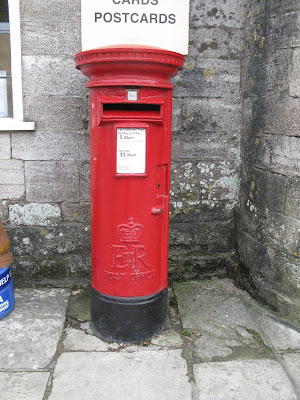I thought I would write a little about the history of a few of the traditional icons of the U.K.
When I was visiting earlier this year I was filled with nostalgia and found myself taking photos of many things that were familiar to me when I was growing up.

For several years I lived and worked just around the corner from Harley Street, near Regent's Park, London. This street is known world over for its large cluster of private dentists,
surgeons, and doctors, mostly where the rich and famous seek health care.
Since the 19th century, the number of doctors, hospitals, and medical organizations in and around Harley Street has greatly increased. Records show that there were around 20 doctors in 1860. When the National Health Service was established in 1948, there were about 1,500. Today, thousands of people are employed in the Harley Street area, in clinics, medical practices, and hospitals such as The London Clinic.

When I was in the London Waterloo Train Station I was fascinated with this example of modern health care. Medicentres are walk-in private medical centres based in London. No appointment is necessary and you will normally be seen within 20 minutes. A great idea for travelers passing through or people who work in the city who can drop in on their lunch break.
* If a person becomes ill while visiting Britain, they are eligible for free, out patient, emergency treatment in the Accident and Emergency departments of National Health Service hospitals.

The London Bus is one of London's principal icons, the red rear-entrance double-deck Routemaster is recognized worldwide. Although it has now been largely phased out of service, with only two heritage routes still using the vehicles,
the majority of buses in London are still red.
Buses have been used on the streets of London since 1829, when George Shillibeer started operating his horse drawn omnibus service from Paddington to the city. The London General Omnibus Company (LGOC) began using motor omnibuses in 1902, and manufactured them itself from 1909. The last horse-drawn bus ran on 25 October 1911, although independent operators used them until 1914. The company is now known as London Transport.
This particular bus had been rented out to transport a wedding party to the church and reception - quite a novel idea :-)

A mailbox in the United Kingdom is called a pillar box where mail is deposited to be collected by the Royal Mail. Pillar boxes have been in use since 1852, just 12 years after the introduction of the first adhesive postage stamps and uniform penny post. Royal Mail estimates there are over 100,000 post boxes in the United Kingdom.
Most traditional British pillar-boxes produced after 1905 are made of cast iron. Each post box has its own set of keys and postal workers have to carry large bunches with them when clearing the boxes.

And last but not least, the red telephone box, a public telephone kiosk designed by Sir Giles Gilbert Scott, is a familiar sight on the streets of the United Kingdom . The first standard public telephone kiosk introduced by the U. K. Post Office was produced in concrete. The red telephone box was the result of a competition in 1924 to design a kiosk that would be acceptable to the London Metropolitan. The Post Office chose to make Scott's winning design in cast iron and to paint it red to make it easily visible.
In 1935 it was designed to commemorate the silver jubilee of King George V. It was the first red telephone kiosk to be used extensively outside of London and many thousands were deployed in virtually every town and city. It has become a British icon.
Upon the privatization of Post Office Telephone's successor, British Telecom (BT) issued a more utilitarian design, and began to replace most of the existing boxes.
photos by peacesojourner



No comments:
Post a Comment